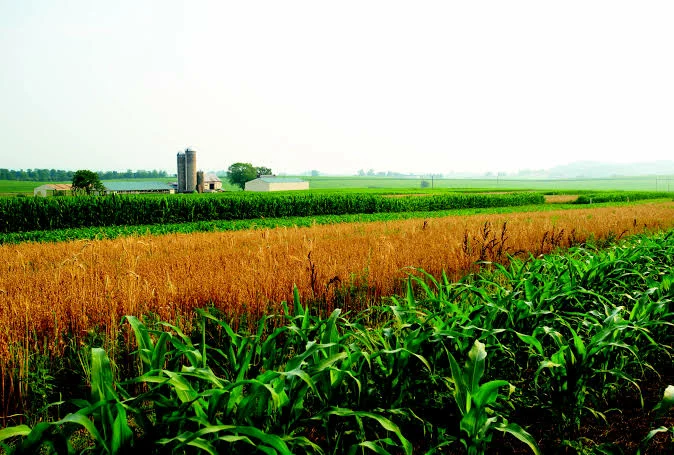Pests and diseases have caused crop loss up to 80 percent in some farms in Nigeria on an estimation of 1.5 to 200,000 hectares of land in 2022.
The crops mostly affected include; maize, rice, sorghum, millet, soybean, groundnut, cowpea in thirty-three states including root and tubers, fruit and vegetables and tree crops.
This is according to the 2022 Wet Season Agricultural Performance Survey in Nigeria carried out by the National Agricultural Extension and Research Liason Services (NAERLs), Ahmadu Bello University, Zaria and released in October.
The survey also show that Abia, Adamawa, Ebonyi, Ekiti, FCT, Kwara, Lagos, Nasarawa Osun, Plateau and Rivers states recorded more than 20 percent crop postharvest loss.
According to the study, there were general increased in the cost of production of crops across the country with the average national production cost of maize increased from N236,120 in 2021 to N296,027 in 2022; that of millet from N133,002 to N190,831; rice from N290,205 to N343,205; sorghum from N158,288 to N205,417 and cowpea from N170,714 to N203,908.
While groundnut rose from N169,607 to N208,254; with soybean from N233,057 to N287,157.
In the report, majority of farmer purchased their farm inputs from open market at prices that were higher in 2022 than what was obtainable in 2021
While average cost of NPK and Urea fertilizer in 2021 was N9,000 and N12,500 per bag, respectively compared to 2022 of an average price of N22,500 and N23,200. The wet blend NPK 15:15:15 and some other types of fertilizers were sold above N30,000 per 50 kg bag.
The total population of cattle in 2022 was 20,944,893 as against 20,764,244 while the sheep population in 2022 was 49,124,553, similar to the population of the species in 2021.
The population of goats is the largest, with 88,293,636 goats in 2022. This was an increase of 2,153,503 from the population of the species in 2021 which was 86,140,132 while the total population of chickens in 2022 was 258,518,091 as against 240,481,945 birds in 2021.
In terms of mechanisation in 2022, the North-East zone recorded the highest number of functional tractors with 131 available for farm operations, while the South-West reported only 23 tractors. Most of the privately owned functional tractors 123 were domiciled in the North-West.
All the states experienced a significant increase in prices of food commodities in 2022.
Accordingly, rainfall was higher across the six agro-ecological zones in 2022 than in 2021 except in the South-East zone where the trend of rainfall was largely diffused. number of rainy days in 2022 were also comparatively higher than 2021.
The report also show that as of October this year, floods inundated 34 out of the 36 States and FCT, affecting over 1,411,051 people and leading to about 500 deaths.
Additionally, 1,546 injured persons, 37,633 destroyed houses and loss of livestock and crops in submerged farmland were reported with the worst affected states include Adamawa, Anambra, Bauchi, Ebonyi, Jigawa, Kano, Kogi, Niger and Taraba.
Presenting the executive summary of the survey to the minister of agriculture and rural development, Dr Mohammad Mahmood Abubakar in Abuja on Tuesday, executive director of NAERLs, Prof Emmanuel Ikani called for aggressive mechanisation and dry season farming to augment food production loss due to the 2022 flooding.
He said there was a need for ADPs and state ministries of agriculture to have facilities for periodical, regular and continuous agricultural data collection which is necessary to ascertain timely and accurate collections of credible agricultural data.
Other recommendations include, the need for policies towards the reduction of production and landing costs of farm inputs like agrochemicals, fertilizers, and feeds for fish, and livestock need to be integrated into the national agricultural system which can be achieved through research and utilization of locally sourced raw materials.
Effective utilization of grain reserves for storage of agricultural produce is also needed as he said existing policies in this regards need to be revisited to enhance food security in the country.





